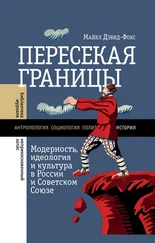Schneider F., Pommerehne W.W. Private Demand for Public Subsidies to the Arts: A Study in Voting and Expenditure Theory // Economics of Cultural Decisions / W.S. Hendon, J.L. Shanahan (eds). Cambridge: Abt Books, 1983. P. 192–206; repr. in [Towse, 1997a, vol. II, p. 632–646].
Schultz T.W. The Economic Value of Education. N.Y.: Columbia University Press, 1963.
Schultz T.W. Investment in Human Capital: The Role of Education and of Research. N.Y.: Free Press, 1970.
Schuster J.M., de Monchaux J., Riley C.A. II (eds). Preserving the Built Heritage: Tools for Implementation. Hanover: University Press of New England, 1997.
Seaman B.A. Economic Theory and the Positive Economics of Arts Financing // American Economic Review. 1981. Vol. 71. P. 335–340.
Seaman B.A. Arts Impact Studies: A Fashionable Excess // National Conference of State Legislatures, Economic Impact of the Arts: A Source-book. Washington, DC: National Conference of State Legislatures, 1987. P. 4375; repr. in [Towse, 1997a, vol. II, p. 723–755].
Seaman B.A. Economic Analysis of Arts Labor Markets: Lessons from Sports? // Proceedings of International Symposium on Cultural Economics. Association for Cultural Economics International and Japan Association for Cultural Economics. Tokyo, 28–30 May 1999. P. 134–144.
Sen A. Development as Capability Expansion // Human Development and the International Development Strategy for the 1990s / K. Griffin, J. Knight (eds). L.: Macmillan, 1990. P. 41–58.
Sen A . 1998a. Asian Values and Economic Growth // UNESCO, World Culture Report. 1998a. P. 40–41.
Sen A. 1998b. Culture, Freedom and Independence // UNESCO, World Culture Report. 1998a. P. 317–321.
Serageldin I. Very Special Places: The Architecture and Economics of Intervening in Historic Cities. Washington, DC: World Bank, 1999.
Serageldin I., Grootaert C. Defining Social Capital: an Integrating View // Social Capital: A Multi-faceted Perspective / P. Dasgupta, I. Serageldin (eds). Washington, DC: World Bank, 2000. P. 40–58.
Serageldin I., Taboroff J. (eds). Culture and Development in Africa. Washington, DC: World Bank, 1994.
Sherburne J.C. John Ruskin or the Ambiguities of Abundance: A Study in Social and Economic Criticism. Cambridge: Harvard University Press, 1972.
Shweder R.A. True Ethnography: The Lore, the Law and the Lure // R. Jessor, A. Colby, R.A. Shweder (eds). Ethnography and Human Development: Context and Meaning in Social Inquiry. Chicago: University of Chicago Press, 1996. P. 15–52.
Smith A. An Inquiry into the Nature and Causes of the Wealth of Nations. 1776 / R.H. Campbell et al. (eds). Oxford: Clarendon Press, 1976 [Рус. изд.: Смит А. Исследование о природе и причинах богатства народов. М.: Эксмо, 2007].
Smith C. Creative Britain. L.: Faber & Faber, 1998.
Smith T. Value and Form: Formations of Value in Economics, Art and Architecture // Paper presented to Conference on The Market and the Visual Arts. Duke University, 12–13 June, 1999.
Solow R . Intergenerational Equity and Exhaustible Resources // Review of Economic Studies. 1974. Vol. 41. P. 29–45.
Solow R . On the Intergenerational Allocation of Natural Resources // Scandinavian Journal of Economics. 1986. Vol. 88. P. 141–149.
Solow R. Notes on Social Capital and Economic Performance // Social Capital: A Multi-faceted Perspective / P. Dasgupta, I. Serageldin (eds). Washington, DC: World Bank, 2000. P. 6–10.
Stabler M. Are Heritage Conservation and Tourism Incompatible? An Economic Evaluation of their Role in Urban Regeneration: Policy Implications // Managing Cultural Resources for the Tourist / M. Robinson, N. Evans, P. Callaghan (eds). Newcastle: University of Northumbria, 1996. P. 417–439.
Stanfield J.R. Economics, Power and Culture: Essays in the Development of Radical Institutionalism. L.: Macmillan, 1995.
Steiner C.B. African Art in Transit. Cambridge: Cambridge University Press, 1994.
Stigler G.J. The Theory of Economic Regulation // Bell Journal of Economics and Management Science. 1971. No. 2. P. 3–21.
Stiglitz J.E. Principles of Microeconomics. N.Y.: W.W. Norton, 1997.
Stoppard T. Arcadia. L.: Faber & Faber, 1993.
Storey J. An Introductory Guide to Cultural Theory and Popular Culture. Hemel Hempstead: Harvester Wheatsheaf, 1993.
Streeten P Culture and Sustainable Development: Another Perspective // Wolfensohn J.D. et al. Culture Counts: Financing, Resources, and the Economics of Culture in Sustainable Development. Washington, DC: World Bank, 2000. P. 41–46.
Taylor C. Irreducibly Social Goods // Rationality, Individualism and Public Policy / G. Brennan, C. Walsh (eds). Canberra: Centre for Research on Federal Financial Relations, Australian National University, 1990. P. 45–63.
Temin P Is It Kosher to Talk about Culture? // Journal of Economic History. 1997. Vol. 57. P. 267–287.
Thompson B.J., Throsby C.D., Withers G.A. Measuring Community Benefits from the Arts. Research Paper 261. Sydney: Macquarie University, School of Economic and Financial Studies, 1983.
Thornton W. On Labour: its Wrongful Claims and Rightful Dues, its Actual Present and Possible Future. L.: Macmillan, 1869.
Throsby D. The Measurement of Willingness-to-Pay for Mixed Goods // Oxford Bulletin of Economics and Statistics. 1984. Vol. 46. P. 279–289.
Throsby D. Artists as Workers // Cultural Economics / R. Towse, A. Khakee (eds). Heidelberg: Springer-Verlag, 1992. P. 201–208; repr. in [Towse, 1997a, vol. II, p. 261–268].
Throsby D . A Work-Preference Model of Artist Behaviour // Cultural Economics and Cultural Policies / A. Peacock, I. Rizzo (eds). Dordrecht: Kluwer Academic Publishers, 1994a. P. 69–80.
Throsby D. The Production and Consumption of the Arts: a View of Cultural Economies // Journal of Economic Literature. 1994b. Vol. 32. P. 1–29; repr. in [Towse, 1997a, vol. I, p. 51–79].
Throsby D. Culture, Economics and Sustainability // Journal of Cultural Economics. 1995. Vol. 19. P. 199–206.
Throsby D. Disaggregated Earnings Functions for Artists // Economics of the Arts: Selected Essays / V. A. Ginsburgh, P.-M. Menger (eds). Amsterdam: North-Holland, 1996. P. 331–346.
Throsby D. Making Preservation Happen: The Pros and Cons of Regulation // Preserving the Built Heritage: Tools for Implementation / J.M. Schuster, J. de Monchaux, C.A. Riley II (eds). Hanover: University Press of New England, 1997a. P. 32–48.
Throsby D. Seven Questions in the Economics of Cultural Heritage // Economic Perspectives on Cultural Heritage / M. Hutter, I. Rizzo (eds). L.: Macmillan, 1997b. P 13–30.
Throsby D. Sustainability and Culture: Some Theoretical Issues // International Journal of Cultural Policy. 1997c. Vol. 4. P. 7–20.
Throsby D. 1998a. Rethinking the State’s Role: Privatization, Economics and Cultural Policy // Privatization and Culture: Experiences in the Arts, Heritage and Cultural Industries in Europe / P.B. Boorsma, A. van Hemel, N. van der Wielen (eds). Dordrecht: Kluwer Academic Publishers, 1998. P. 49–57.
Throsby D. 1998b. The Role of Music in International Trade and Development // UNESCO, World Culture Report. 1998a. P. 193–209.
Throsby D. Cultural Capital // Journal of Cultural Economics. 1999. Vol. 23. P. 3–12.
Throsby D., Thompson B. But What Do You Do for a Living? A New Economic Study of Australian Artists. Sydney: Australia Council, 1994.
Читать дальше
Конец ознакомительного отрывка
Купить книгу
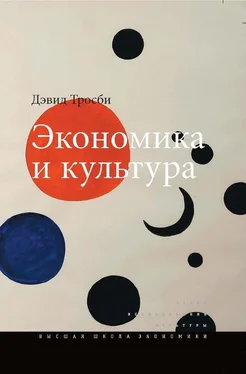

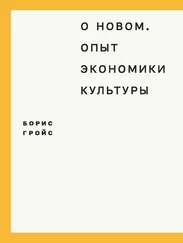
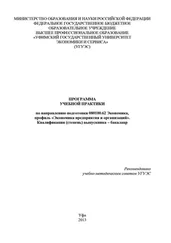
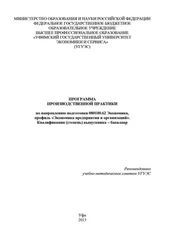
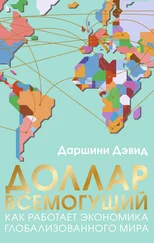
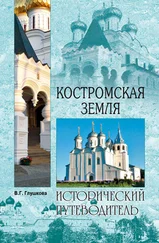

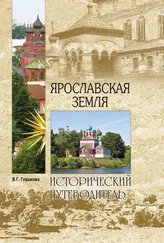
![Вера Глушкова - Смоленская земля [Природа. История. Экономика. Культура. Достопримечательности. Религиозные центры] [litres]](/books/409035/vera-glushkova-smolenskaya-zemlya-priroda-istoriya-thumb.webp)

